Further Than Before: Pathway To The Stars, Parts 1 And 2 - Update!
Further Than Before: Pathway to the Stars, Parts 1 and 2 - Update!
Further Than Before: Pathway to the Stars, Parts 1 and 2 – Update!

As with all authors of integrity, writing the message they truly have within them to share with the rest of the world, with the intent to entertain while edifying, rather than selling my ethics to whomever or whatever for the sake of big sales, I have made some updates to Parts 1 and 2 of the Further Than Before: Pathway to the Stars two-part series!
Whenever I find continuity issues, clarity…
View On WordPress
More Posts from Matthewjopdyke and Others
10 Things: Journey to the Center of Mars
May the fifth be with you because history is about to be made: As early as May 5, 2018, we’re set to launch Mars InSight, the very first mission to study the deep interior of Mars. We’ve been roaming the surface of Mars for a while now, but when InSight lands on Nov. 26, 2018, we’re going in for a deeper look. Below, 10 things to know as we head to the heart of Mars.

Coverage of prelaunch and launch activities begins Thursday, May 3, on NASA Television and our homepage.
1. What’s in a name?

“Insight” is to see the inner nature of something, and the InSight lander—a.k.a. Interior Exploration using Seismic Investigations, Geodesy and Heat Transport—will do just that. InSight will take the “vital signs” of Mars: its pulse (seismology), temperature (heat flow) and reflexes (radio science). It will be the first thorough check-up since the planet formed 4.5 billion years ago.
2. Marsquakes.
You read that right: earthquakes, except on Mars. Scientists have seen a lot of evidence suggesting Mars has quakes, and InSight will try to detect marsquakes for the first time. By studying how seismic waves pass through the different layers of the planet (the crust, mantle and core), scientists can deduce the depths of these layers and what they’re made of. In this way, seismology is like taking an X-ray of the interior of Mars.
Want to know more? Check out this one-minute video.
3. More than Mars.

InSight is a Mars mission, but it’s also so much more than that. By studying the deep interior of Mars, we hope to learn how other rocky planets form. Earth and Mars were molded from the same primordial stuff more than 4.5 billion years ago, but then became quite different. Why didn’t they share the same fate? When it comes to rocky planets, we’ve only studied one in great detail: Earth. By comparing Earth’s interior to that of Mars, InSight’s team hopes to better understand our solar system. What they learn might even aid the search for Earth-like planets outside our solar system, narrowing down which ones might be able to support life.
4. Robot testing.
InSight looks a bit like an oversized crane game: When it lands on Mars this November, its robotic arm will be used to grasp and move objects on another planet for the first time. And like any crane game, practice makes it easier to capture the prize.
Want to see what a Mars robot test lab is like? Take a 360 tour.
5. The gang’s all here.

InSight will be traveling with a number of instruments, from cameras and antennas to the heat flow probe. Get up close and personal with each one in our instrument profiles.
6. Trifecta.

InSight has three major parts that make up the spacecraft: Cruise Stage; Entry, Descent, and Landing System; and the Lander. Find out what each one does here.
7. Solar wings.
Mars has weak sunlight because of its long distance from the Sun and a dusty, thin atmosphere. So InSight’s fan-like solar panels were specially designed to power InSight in this environment for at least one Martian year, or two Earth years.
8. Clues in the crust.

Our scientists have found evidence that Mars’ crust is not as dense as previously thought, a clue that could help researchers better understand the Red Planet’s interior structure and evolution. “The crust is the end-result of everything that happened during a planet’s history, so a lower density could have important implications about Mars’ formation and evolution,” said Sander Goossens of our Goddard Space Flight Center in Greenbelt, Maryland.
9. Passengers.

InSight won’t be flying solo—it will have two microchips on board inscribed with more than 2.4 million names submitted by the public. “It’s a fun way for the public to feel personally invested in the mission,” said Bruce Banerdt of our Jet Propulsion Laboratory, the mission’s principal investigator. “We’re happy to have them along for the ride.”
10. Tiny CubeSats, huge firsts.

The rocket that will loft InSight beyond Earth will also launch a separate NASA technology experiment: two mini-spacecraft called Mars Cube One, or MarCO. These suitcase-sized CubeSats will fly on their own path to Mars behindInSight. Their goal is to test new miniaturized deep space communication equipment and, if the MarCOs make it to Mars, may relay back InSight data as it enters the Martian atmosphere and lands. This will be a first test of miniaturized CubeSat technology at another planet, which researchers hope can offer new capabilities to future missions.
Check out the full version of ‘Solar System: 10 Thing to Know This Week’ HERE.
Make sure to follow us on Tumblr for your regular dose of space: http://nasa.tumblr.com.
For all interested (in the US), October 11th, 2019 is the last full day with an opportunity to win the free hardcover book: A Cosmic Legacy: From Earth to the Stars Contemporary Science Fiction Author Matthew J. Opdyke is giving away two of his one-year-anniversary novels. This includes all his previously published content in the continuing saga, via his compilation (a $45 value). Race to win, or simply buy it, and make this grand literary opus the favorite item in your library, next to your reading corner, on your nightstand, or in your living room, as you settle and read while the days go by. Enjoy the story of several heroes who do as much as they can to heal the Earth, provide healing to those suffering most, and help humanity get out and into the Cosmos! LCCN: 2019911854 ISBN: 978-1-7333131-2-4
To head straight to Amazon for a free chance to win, follow this link: https://www.amazon.com/ga/p/1891f3f0b29c9788
To see the author's latest video, follow this URL: https://youtu.be/NLrOeExSTBE
For the Author's Google Business Promo, follow this URL:https://bit.ly/2IGRNhi
LCCN: 2019911854 ISBN: 978-1-7333131-2-4
Music by and courtesy of Dreamstate Logic: http://dreamstatelogic.com/updates.html https://www.youtube.com/dreamstatelogic #SpaceOpera #ScienceFiction #SciFi #ContemporarySciFi #Fantasy #Sophisticated #Books #eBooks #MatthewJOpdyke #mjopublications #physics #astronomy #biotech #neurotech #nanotech #spaceexploration #wellbeing #EarthFirst #physiology #neurology #longevity #CRISPR #sociopoliticalscifi #forEveryone
The Universe's Brightest Lights Have Some Dark Origins
Did you know some of the brightest sources of light in the sky come from black holes in the centers of galaxies? It sounds a little contradictory, but it’s true! They may not look bright to our eyes, but satellites have spotted oodles of them across the universe.
One of those satellites is our Fermi Gamma-ray Space Telescope. Fermi has found thousands of these kinds of galaxies in the 10 years it’s been operating, and there are many more out there!

Black holes are regions of space that have so much gravity that nothing - not light, not particles, nada - can escape. Most galaxies have supermassive black holes at their centers - these are black holes that are hundreds of thousands to billions of times the mass of our sun - but active galactic nuclei (also called “AGN” for short, or just “active galaxies”) are surrounded by gas and dust that’s constantly falling into the black hole. As the gas and dust fall, they start to spin and form a disk. Because of the friction and other forces at work, the spinning disk starts to heat up.

The disk’s heat gets emitted as light - but not just wavelengths of it that we can see with our eyes. We see light from AGN across the entire electromagnetic spectrum, from the more familiar radio and optical waves through to the more exotic X-rays and gamma rays, which we need special telescopes to spot.

About one in 10 AGN beam out jets of energetic particles, which are traveling almost as fast as light. Scientists are studying these jets to try to understand how black holes - which pull everything in with their huge amounts of gravity - somehow provide the energy needed to propel the particles in these jets.

Many of the ways we tell one type of AGN from another depend on how they’re oriented from our point of view. With radio galaxies, for example, we see the jets from the side as they’re beaming vast amounts of energy into space. Then there’s blazars, which are a type of AGN that have a jet that is pointed almost directly at Earth, which makes the AGN particularly bright.

Our Fermi Gamma-ray Space Telescope has been searching the sky for gamma ray sources for 10 years. More than half (57%) of the sources it has found have been blazars. Gamma rays are useful because they can tell us a lot about how particles accelerate and how they interact with their environment.

So why do we care about AGN? We know that some AGN formed early in the history of the universe. With their enormous power, they almost certainly affected how the universe changed over time. By discovering how AGN work, we can understand better how the universe came to be the way it is now.

Fermi’s helped us learn a lot about the gamma-ray universe over the last 10 years. Learn more about Fermi and how we’re celebrating its accomplishments all year.
Make sure to follow us on Tumblr for your regular dose of space: http://nasa.tumblr.com.
I am pleased to announce the New Release of Pathway to the Stars: Part 6.1, Trilogy!!! Continue the journey!
In Eliza's preface to her story, she taught us a lot. Here is one of her quotes, available in the new release:
"We need to overcome our apparent fixation toward and acceptance of suffering, misery, and death—many argue to the contrary. We need to rise up and fight against senescence and death, and if necessary, until our own ends. Doing so will fill our lives with purpose and lead to much more than a dismal and silly existence. Life will be a greater reward if we carry on with the spirit or thought of enabling the future of humanity for the long-haul."
~ Eliza Williams - "Pathway to the Stars: Part 6.1, Trilogy," Appendix
Announcing the Second Space Opera Trilogy! Enjoy the journey!
Further Than Before: Pathway to the Stars, Tome
This gigantic manuscript consists of the stories in both “Further Than Before: Pathway to the Stars, Part 1 and Part 2” compiled into a gigantic scholarly text, called the “Tome.” For Eliza and her crew of friends, it is a race against time to meet new cultures, preserve life, and share our legacies with distant civilizations, so we can span the Cosmos and go further than before! Purchase this eBook or HEFT this TOME in the printed format and enjoy the entire original Space Opera! The “Further Than Before” series, subtitled “Pathway to the Stars,” consists of all of the stories in an abridged format, ready for people to see what happens before each of the more detailed “Pathway to the Stars” series booklets are released, and is available in a Part 1 and Part 2, which are in-turn compiled into a gigantic scholarly text, called the “Tome.” Eliza Williams, Yesha Alevtina, James Cooper, Vesha Celeste, Sky Taylor and a host of friendly heroes tackle some of the greatest dilemmas of the day to bring humanity out and into the stars bearing a legacy we would be proud to share with other civilizations–a legacy of kindness, of mind-to-mind communication, of love, and of healing instead of harming. If we are to overcome the great expansion and the death of all life, we must overcome the smaller challenges to progress and focus on even greater ones. Eliza and her team work diligently to speed the pace of society in her world with the belief that beauty and untold potential are within every being. If we find ways to bring that out in ourselves and others, a future where we can breed longevity, a collective and high quality of life, augment the clarity of our minds, and innovate to span the Cosmos may be in our grasp. Within the organization Eliza founded, called Pathway, she and her team takes us on a fantastical and near-Utopian journey to get us out and into the farthest reaches of space, as we advance further than we have before, to make this happen. There are dilemmas such as the need for longevity and the ability to visit loved ones following long journeys, and they put in place the capabilities to overcome the effects of space travel on our physiology and neurology. We journey as Eliza, and her growing crew of friends, are determined to stabilize a rocky economy, wipe away undue suffering, violence, disease, terrorism, and trafficking in persons. They work together to tame seismic activity, weather, and fires. She and her friends tackle ways to prevent extinction and provide solutions to quality of life concerns. They even consider the longevity of our Sun and our Earth’s capacity to preserve life. Eliza tackles each of these issues to get us out, and into the stars, so we can begin our biggest quest–to help our Universe breathe ever so lightly. Allowing it to expand and contract ever so gently, may allow us to preserve its life as well as all of life, allowing us to maximize our mental capacity. With intellect, experience, perspective, kindness, and graciousness we will have the ability to gain more wisdom leading to longevity and clarity of mind. For Eliza and her crew of friends, it is a race against time to meet new civilizations, preserve life, share our legacies, and go further than before! Heft this Tome and join me on the entire original Space Opera of this Pathway to the Stars! No matter the challenge, there will always be an opportunity for greater pursuits! #spaceopera #spaceoperabooks #scifibooks #futurism #scifiauthor #sciencefiction #scififantasy #biotech #nanotech #neurotech #spacetravel #solarsystem #sciencefictionbooks Amazon Author Site: https://www.amazon.com/author/matthew… Author Website: https://www.ftb-pathway-publications.com LinkedIn Company Site: https://www.linkedin.com/company/ftb-… Facebook FTB General Group: https://www.facebook.com/groups/Furth… Facebook Page: https://www.facebook.com/Further-Than… Instagram: https://www.instagram.com/matthewopdyke/ Twitter: https://twitter.com/Besokster Pinterest: https://www.pinterest.com/besokster/









The 4 Scientific Lessons Stephen Hawking Never Learned
“His work, his life, and his scientific contributions made him an inspiration to millions across the world, including to me. But the combination of his achievements and his affliction with ALS — combined with his meteoric fame — often made him immune to justified criticism. As a result, he spent decades making false, outdated, or misleading claims to the general population that permanently harmed the public understanding of science. He claimed to have solutions to problems that fell apart on a cursory glance; he proclaimed doomsday for humanity repeatedly with no evidence to back such claims up; he ignored the good work done by others in his own field. Despite his incredible successes in a number of arenas, there are some major scientific lessons he never learned. Here’s your chance to learn them now.”
Hawking’s contribution to physics, from the existence and meaning of singularities to properties of a black hole’s event horizon, entropy, temperature, and the radiation they generate were remarkable in the 1960s and 1970s. His popularizations of science were groundbreaking, too, exposing a general audience to a wide variety of wild and speculative ideas, igniting an interest in theoretical astrophysics in the minds of millions around the world. But as brilliant as Hawking was, there were a number of lessons about science and humanity that he never learned for himself, from the Big Bang and black holes to lessons about communicating speculative or unproven information as though they were facts. We have a tendency, when we turn people into heroes, to lionize their achievements and ignore their failings, but to do so cheats humanity out of recognizing all the facets of a complicated character.
Come learn, for yourself, the 4 scientific ideas that Stephen Hawking never managed to learn and incorporate while he was still alive.

Pathway to the Stars: Part 6.1, Trilogy - For more information check out https://www.ftb-pathway-publications.com//product-page/pathway-to-the-stars-part-6-1-trilogy-paperback Announcing the Second Space Opera Trilogy! Enjoy the journey! #spaceopera #sciencefiction #scifibooks #spaceoperabooks #politicalscifi https://www.instagram.com/p/BvoAxVyAEpJ/?utm_source=ig_tumblr_share&igshid=87lp2ukuniko
Pretty nice representation of Earth on through to the observable universe

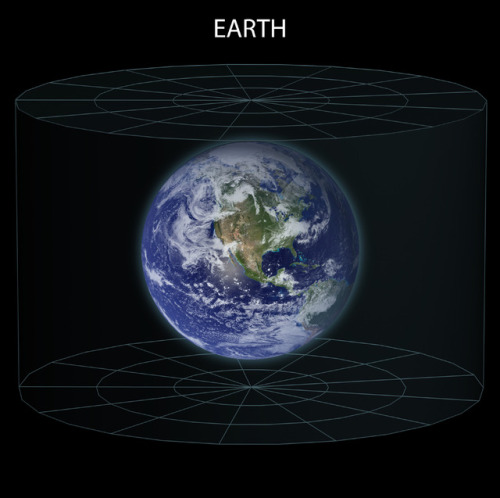
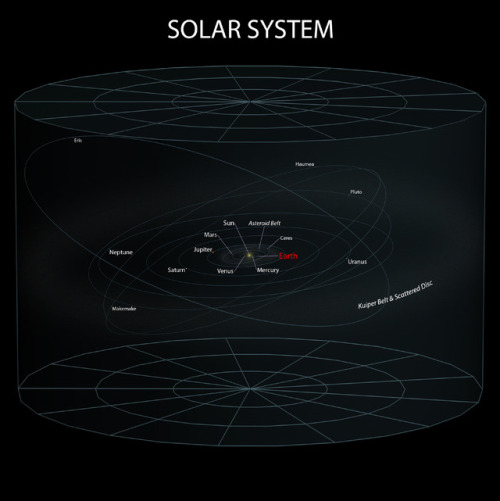
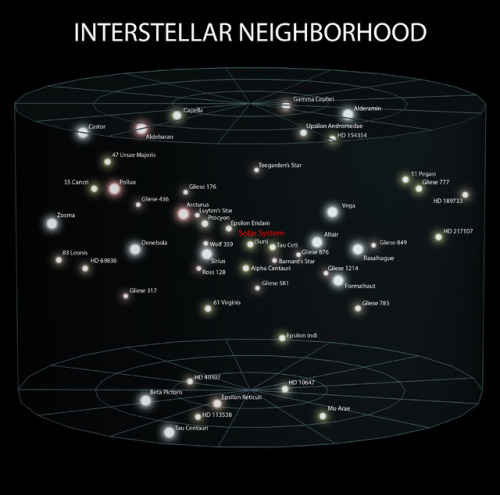
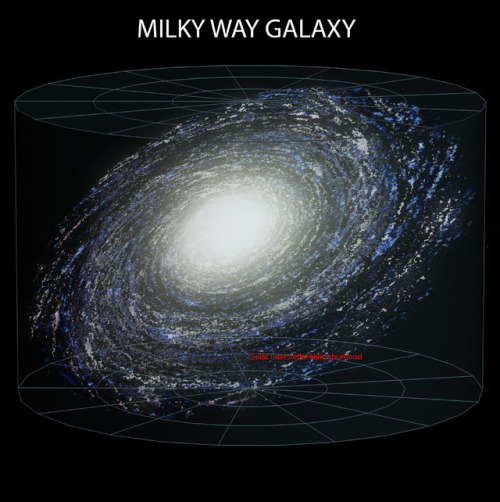
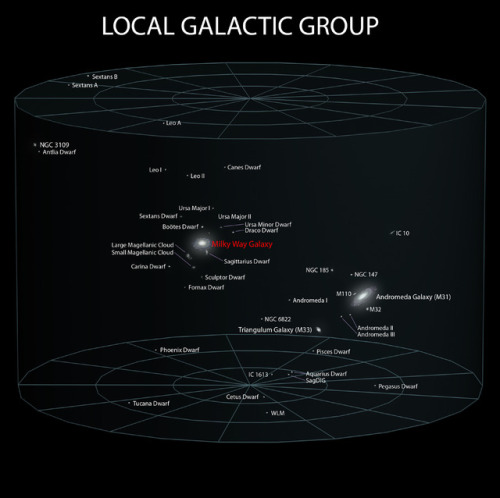
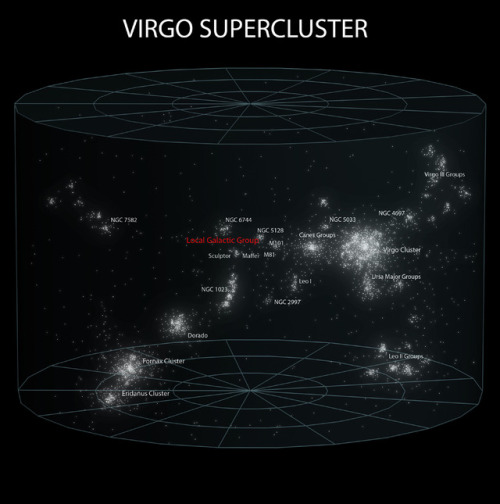
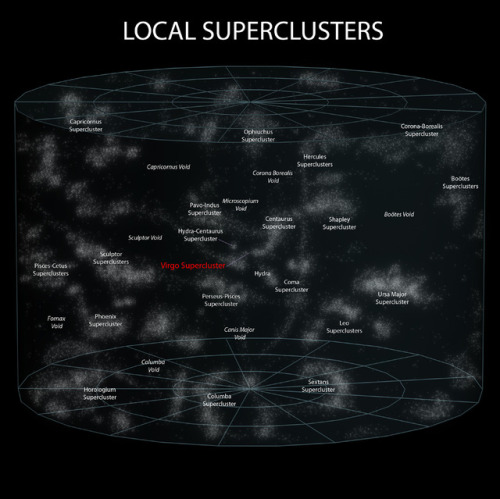
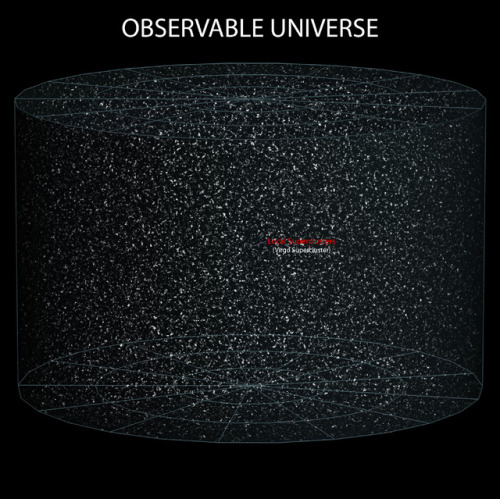
~ wikimedia commons

You’re looking at a real big deal.
Because in a nanotechnology lab, big deals come in smaller and smaller packages. What you see above is an extreme close-up of a 5 nanometer transistor. In an industry-first, the IBM Research Alliance developed nanosheet transistors that will enable a 5 nm chip. What’s so big about that? Well, by achieving a scale of 30 billion switches on a fingernail sized chip, it can deliver significant enhancements over today’s state-of-the-art 10 nm chips. This not only improves the performance of current technologies but also provides the fuel for the future demands of AI, VR, quantum and mobile technologies to run on. Plus, it could also make things like smartphone batteries last 2-3x longer between charges, so it may also be a real lifesaver too.
Learn more about it->

@shanrel @delosveronesi @woodbscinpsy-blog @sonictantra @akatsuki-deidara-katsu
ok
